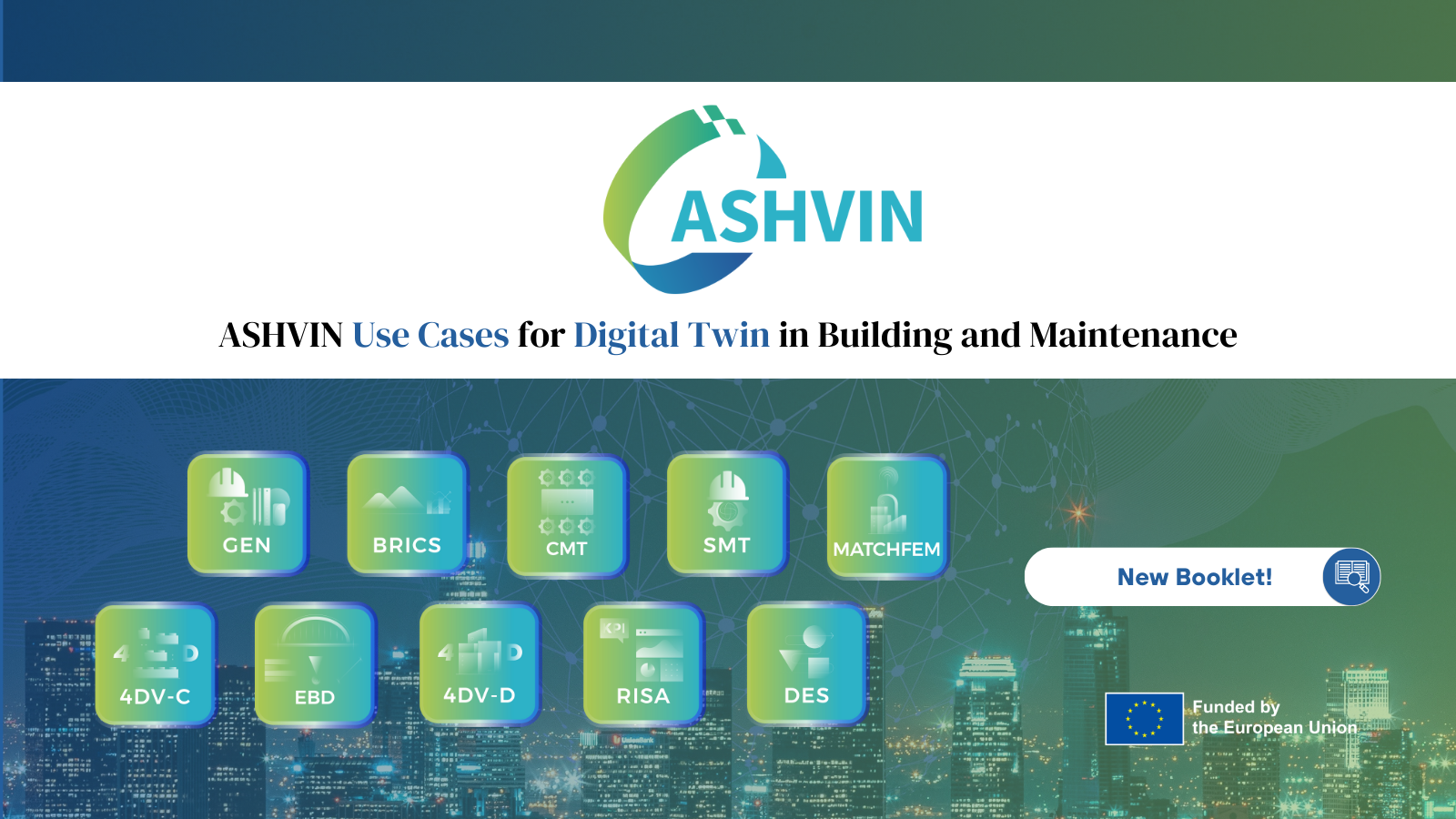Within the frame of the European Project “ASHVIN – Assistants for Healthy, Safe, and Productive Virtual Construction Design, Operation & Maintenance using a Digital Twin”, one of the toolkits that will be embedded within the platform is related to Simulation and Multi-physics. The Multiphysics simulation toolkit aims at representing the behaviour of the asset and at providing evidence-based engineering methods.
ASHVIN aims at enabling the European construction industry to significantly improve its productivity, while reducing cost and ensuring safe work conditions, by providing a proposal for a European wide digital twin standard, an open-source digital twin platform integrating IoT and image technologies, and a set of tools and demonstrated procedures to apply the platform and the standard proven to guarantee specified productivity, cost, and safety improvements.
As one of the great triumphs of modern day applied mathematics, numerical analysis and algorithm development, the finite element method represents a suitable set for solving a broad variety of construction engineering problems ranging from simple to complex simulations. At the same time, new ecosystems such as the IoT-based ability to obtain data by measurements often through sensor networks and the development of IA-based algorithms, pose the question of how one systematically incorporates measurements and data analysis into FEM.
The envisioned ASHVIN solution seeks to encompass powerful BIM-enabled design tools, Multi-Physics, sensor-based and image-based data acquisition and advanced data-analytics. Within the consortium, a set of three webinars have been designed for providing a rich ecosystem among developers from the beginning of the project. This ecosystem is designed as interoperable and open. The Virtual Space, Twins awakening and Data rebellion represent the set of designed webinars. On the 25th of January 2021, the first edition of The Virtual Space took place at UPC in Barcelona for the Multi-Physics team, Participants started working on simple yet geometrically-rich physical systems within BIM-enabled, Python-infused platforms. The basis established in the webinar are already being used for the development of specific applications related to the demonstrators to be studied by all partners.

Rolando Chacón. Universitat Politècnica de Catalunya.





